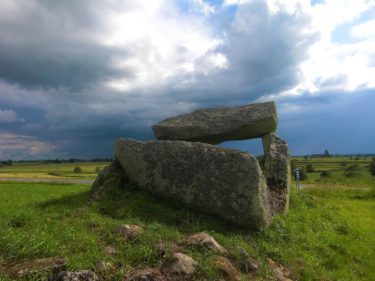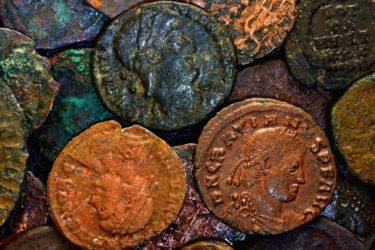I love rugby. I’ve played the game since I was 7 years old, and if it wasn’t for a rash decision to try and tackle someone using only my throat, I would still be turning out for Old Streetonians every week.
There are many reasons to love the sport. Tries are cool, but as a lumbering forward with a top speed somewhere behind an asthmatic rock and a turning circle like an oil tanker with a fetish for cliffs, they have never really been in my part of my skill set.
Instead what I adore is the way a team can build pressure. The percussive thump of charging into the line becomes a drumbeat of inevitability. A well drilled rugby team can beat you by suffocation; every player in the team throwing themselves into contact until you realise that it isn’t a case of if they will score, but when. I love this tension, whether playing or watching. It ratchets up the anticipation so that when the breakthrough finally comes it’s the culmination of collective action, a team coming together to wear their opponents thin until they snap.
I remember having this same feeling when I watched season 8 episode 3 of the TV show Time Team. These 50 minutes of television, available in full on All 4, are what convinced me I wanted to be an archaeologist. They are a damn near perfect example of how an archaeological investigation done properly uses evidence, reasoning and critical thinking. It is also a perfect example of a team of experts working together to really, crushingly, brutally make the point that they are not to be fucked with.
The site is Llygadwy in Wales and the episode starts out as usual with the excitable Tony Robinson springing into shot from an unexpected angle and talking with well-practiced enthusiasm about the excavations at hand.

The site includes what appear to be an interesting collection of features. These are a Neolithic megalith (big standing stone), a Norman watch tower, a Neolithic tomb, a ‘chapel’ with early Christian symbols carved on it and, most impressive of all, a natural spring packed full of metal artefacts and topped with a collection of stones carved with human faces.
Tony strokes a random dog that runs into shot, says that the team only have three days to find out why all these different sites are clustered together and the credits roll. We are off!
THUMP
The seeds of doubt are sown straight away. Tony gives the introduction and describes the site as an ‘historical theme park’ and points out that no local archaeologist wanted to be involved in the program because they thought it might be an elaborate hoax (come on guys! A spoiler alert would be nice).
Next the team look at the finds the landowner claims to have found in the spring. It’s an impressive assemblage, containing Bronze Age axes, Roman coins, figurines and broches. In any other episode this would be the punchline to the dig. Show the woollen clad muddy folk digging for two parts, get Tony to worry they might not find anything and then come back from the second break with a dirty great big piece of pot and the audience bursts into spontaneous applause and throws their undergarments at the screen. Here though the finds are looked at with some interest, but it feels more like the opening moves in a game of chess. Lay out the pieces, make it all look safe, set the trap.
THUMP
Day 1, the trenches are opened, and excavations begin. The team talk about the spring and how it might be a holy site. An exciting prospect given their rarity (exciting and unexpectedly rare will become a bit of a theme as the programme progresses). Like good archaeologists they approach the site with an open mind and let the evidence lead them. I find this incredible given that the alarm bells were already ringing for me after the landowner refuses to give an interview about the site and offers up his son-in-law as a sacrificial spokesperson instead. Creighton (for that is his name) lets slip that some of the stones of the Neolithic tomb had been ‘stood up’ by the family- a bit of low-level fiddling but no worse than that…
THUMP
A single find turns up in the spring dig and the geophysical survey isn’t showing any features. Everyone is now using strong language for a British teatime archaeology show like ‘worry’ and ‘concerning’. Then the audience is introduced to another ‘exciting and unexpectedly rare’ find- a head stone normally only found in France. Why is it here then? More furrowed brows and the promise to look into it in more detail.
Then a change in pace, Phil Harding finds a flint tool and a piece of Neolithic pottery. No worries here, it all looks good, though caution is still the watchword. Though these finds appear to be kosher they don’t prove the stones are legit – the only way that can be understood is to look at the finds in the holes in which the stones are placed. Caution is quickly shown to be a wise move as a piece of modern pottery and a bit of clay drainpipe are discovered. The ‘Neolithic’ stones can’t be more than a few hundred years old.
THUMP
The finds from the landowner have now been sorted into a chronology, but once again things are looking odd. The coins that are in the assemblage are overly represented in the 3rd century AD. This might not seem like much until you think about what the spring site is supposed to be, namely an area of pagan worship, so why is it only seemingly starting to get going at a point where Christianity is spreading through the Empire?
THUMP
The Norman tower has a fireplace that has never been used and stone supports that are the wrong way up. Then there are stories of a C19th Vicar who travelled the world with an antiquarian’s eye. A map shows the tower suddenly appearing in the C19th century and as such it is identified as a folly. A trench in the ‘chapel’ finds nothing but animal dung marking it down as a barn.
THUMP
So far it seems like the site holds the interesting tale of an eccentric Vicar building a clump of curios, but then things take a turn for the modern and, potentially, more sinister motivations. A sword is found, it is ‘unexpected and rare’. The expert says it most likely was made in Switzerland – the kind of find that could put a site firmly on the map. It’s just a shame then that it is resting on top of a piece or barbed wire! Samples of wire are taken and compared to fences around the site. A match is found at the bottom of the field.

THUMP
The experts have a problem with the landowner’s finds, the colours of the metals are different suggesting they laid in different types of soil.
THUMP
‘Ancient’ marks are scratched through the surface discolouration of a statue meaning they must have been added much later.
THUMP
The barbed wire also runs under a service trench, which was laid in 1992 meaning the sword must have been buried after that date.
THUMP
THUMP
SNAP
The episode ends with an incredible piece of theatrics. Creighton is brought back out for another interview. Tony opens proceedings by saying the sword is beautiful and Creighton agrees, a smile spreading across his face like the shockwave of a particularly smug bomb. This happiness collapses just as suddenly as it appeared when Tony mentions ‘disappointments’ (the harshest word in his lexicon).
Do yourself a favour, watch this interview. Watch someone try to grasp at the thinnest of straws before realising that there is no way out. It is a moment you don’t often get to see and certainly not one that gets caught on camera. It is experts, doing their jobs well as a team and building up evidence that completely blows apart a hoax for everyone to see.
It is an exciting and unexpectedly rare thing.



